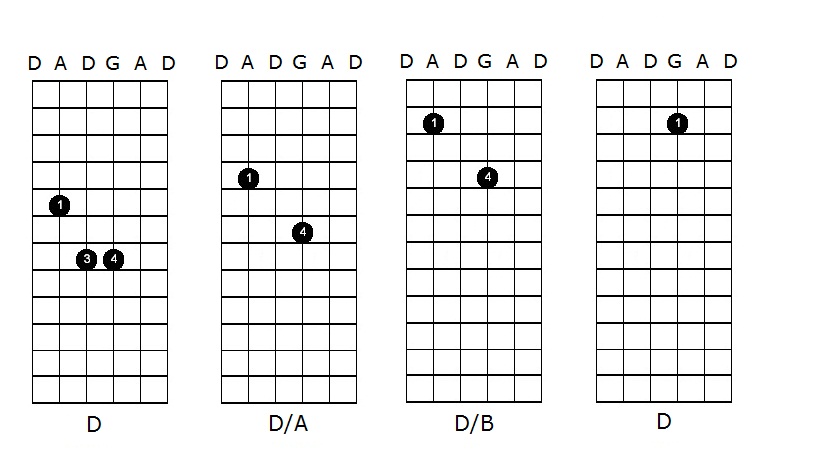I think this may have been the first week where I didn’t have any new chords to show you, but perhaps that is somewhat deceptive. Why do I say that? Because we learned a tune instead, and just like the root key or tonic is the anchor to what chords one would use, the tune is what provides the clues as to which particular chords could be appropriate. For example, when you listen to a tune, do certain notes stand out as important ones that might dictate a chord choice while others are just passing fancies or ornaments? Something to consider as you listen to tunes and try to figure out accompaniment.
We worked this week on the A part of the jig, “The Green Fields of America”. Note that there is both a reel and a jig with this name (and there are a few similarities of the tunes despite the different rhythm). Interestingly enough, when I went to find the notation for the tune, it appears that it is better known by the name, “Maid in the Meadow”. But Eamon taught it to us as the former tune name, and I heard it a few weeks later played by Tony DeMarco when he came through Charlottesville on tour, and he also called it GFA, so it may be that it goes by that name in New York. Yes, I know, another area where there seem to be no definite answers (and while I’m at it, recognize that the notation does not exactly match the way I played it – things to be worked out in a session!). We’ll work on the B part in class after Thanksgiving, but here’s your chance to get ahead!
Listen to Green Fields of America (aka Maid in the Meadow – jig).

I also mentioned in class how I royally screwed up an accompaniment the other night. Just to review what happened… someone broke out a new tune… I quickly figured out the key… adjusted my capo and was playing along more or less fine… A part, repeat A part, B part (phew, no key change… held back on my first strum), repeat B part… thought to myself… great, got it… and came in strong on what I presumed would be going back to the A part of the tune. Instead what I found was a big fat C part with a key change! Wow did that sound miserable and I never recovered. So this was clearly a tune created to put the accompaniment player in his or her place… and it did. So learn from my lesson, while you can play the odds (most tunes are AA BB same key), sometimes that doesn’t work out so well 🙂 Seems like a good segue-way to talk a bit about the structure of tunes in case this area is somewhat new for you. So here’s a brief discussion.
Structure of Tunes
Most Irish tunes follow an “AA BB” form and most of the time, both parts of the tune are in the same key. What do we mean when we say “AA BB”? This means that a tune consists of two parts of generally equal length, an A part and a B part. Generally, one would play each part twice, thus the AA BB notation. So, for 60-70% of the tunes you’ll hear, you are likely to follow this form. Now, if you saw a tune that was AA BB CC, that would be a three part tune. If you saw AA B, that would be a tune where the A part was played twice and the B part once.
In addition, each part could be broken into phrases. For example, a typical A part might have 4 phrases. Interestingly enough, some of these phrases may be repeated in the tune. For example, the first phrase of the A or B part is often identical to the third phrase in the same part. Sometimes, the 2nd and 4th phrases are the same. Finally, in some tunes, the 4th phrase in the A part is the same as the 4th phrase in the B part, and so on. While you can’t count on this (and I won’t venture a guess as to percentages), as the guitarist (or a melody player), it can help you pick up the tune and appropriate accompaniment earlier. Interestingly enough, you might choose to play a different accompaniment on two phrases that are identical to provide a different sound to those parts! But at first, you may find it easier to repeat the same chord pattern that you find pleasing on parts with the same melody before changing things up. As you gain experience, alternative patterns become more second nature to substitute.







